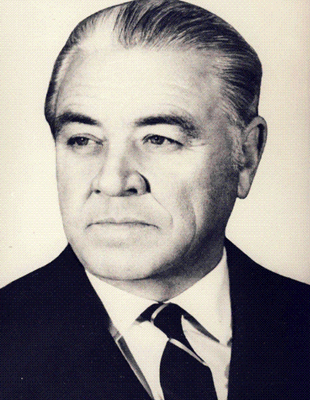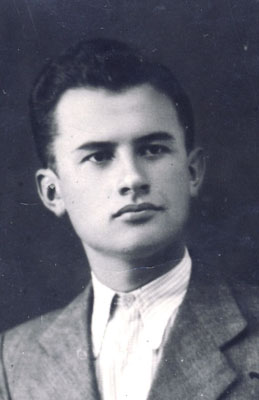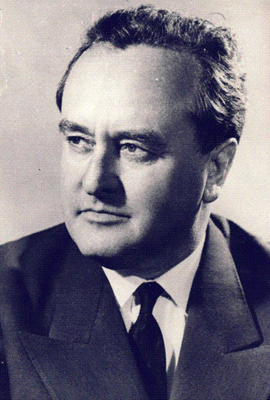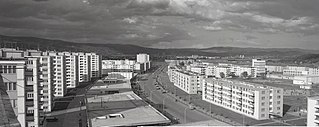| |||||
| Decades: | |||||
|---|---|---|---|---|---|
| See also: | |||||
This is a list of 1967 events that occurred in the Socialist Republic of Romania.
| |||||
| Decades: | |||||
|---|---|---|---|---|---|
| See also: | |||||
This is a list of 1967 events that occurred in the Socialist Republic of Romania.

Ion Gheorghe Iosif Maurer was a Romanian communist politician and lawyer, and the 49th Prime Minister of Romania. He is the longest serving Prime Minister in the history of Romania.

Doftana was a Romanian prison, sometimes referred to as "the Romanian Bastille". Built in 1895 in connection with the nearby salt mines, from 1921 it began to be used to detain political prisoners, among them Gheorghe Gheorghiu-Dej, who was the Prime Minister of Romania (1952–1955), and the Chairman of the State Council of Romania (1961–1965), and Nicolae Ceaușescu, who was General Secretary of Romanian Communist Party (1965–1989), and the first President of Romania (1974–1989).

Șerban Vodă Cemetery is the largest and most famous cemetery in Bucharest, Romania.

The Romanian Communist Party was a communist party in Romania. The successor to the pro-Bolshevik wing of the Socialist Party of Romania, it gave an ideological endorsement to a communist revolution that would replace the social system of the Kingdom of Romania. After being outlawed in 1924, the PCR remained a minor and illegal grouping for much of the interwar period and submitted to direct Comintern control. During the 1920s and the 1930s, most of its activists were imprisoned or took refuge in the Soviet Union, which led to the creation of competing factions that sometimes came into open conflict. That did not prevent the party from participating in the political life of the country through various front organizations, most notably the Peasant Workers' Bloc. During the mid-1930s, due to the purges against the Iron Guard, the party was on the road to achieving power, but the dictatorship of king Carol II crushed this. In 1934–1936, PCR reformed itself in the mainland of Romania properly, with foreign observers predicting a possible communist takeover in Romania. The party emerged as a powerful actor on the Romanian political scene in August 1944, when it became involved in the royal coup that toppled the pro-Nazi government of Ion Antonescu. With support from Soviet occupational forces, the PCR pressured King Michael I into abdicating, and it established the Romanian People's Republic in December 1947.

The Sighet Prison, located in the city of Sighetu Marmației, Maramureș County, Romania, was used by Romania to hold criminals, prisoners of war, and political prisoners. It is now the site of the Sighet Memorial Museum, part of the Memorial of the Victims of Communism.

In 2006, Romanian Television conducted a vote to determine whom the general public considered the 100 Greatest Romanians of all time, in a version of the British TV show 100 Greatest Britons. The resulting series, Great Romanians, included individual programmes on the top ten, with viewers having further opportunities to vote after each programme. It concluded with a debate. On 21 October, TVR announced that the "greatest Romanian of all time" according to the voting was Stephen the Great.

Ion Vincze was a Romanian communist politician and diplomat. An activist of the Romanian Communist Party (PCR), he was married to Constanța Crăciun, herself a prominent member of the party.

Ghencea Cemetery is located in Ghencea neighbourhood of Bucharest, on Ghencea Boulevard, in Sector 6. The cemetery has two sections, civilian and military.

Indonesia and Romania established diplomatic relations on 20 February 1950, two days following Romania's recognition of Indonesian sovereignity in 18 February 1950. Indonesia and Romania have agreed to enhance cooperation in the trade sector. The nations are expecting the other to be the gate to enter each regional market: Indonesia as the gate to enter the ASEAN market and Romania as the gate to enter the European Union's. Indonesia has an embassy in Bucharest and Romania has an embassy in Jakarta.

Avram Bunaciu was a Romanian communist politician and jurist who served as the Minister of Justice, Minister of Foreign Affairs and in March 1965 was for 5 days the acting President of the State Council of Romania.
This is a list of 1989 events that occurred in Romania.
Marțian Dan was a Romanian politician and university professor.

Events from the year 1950 in Romania. The year saw Romania build relationships with other Communist states, including China and East Germany.

This is a list of 1965 events that occurred in the Socialist Republic of Romania.

This is a list of 1966 events that occurred in the Socialist Republic of Romania.